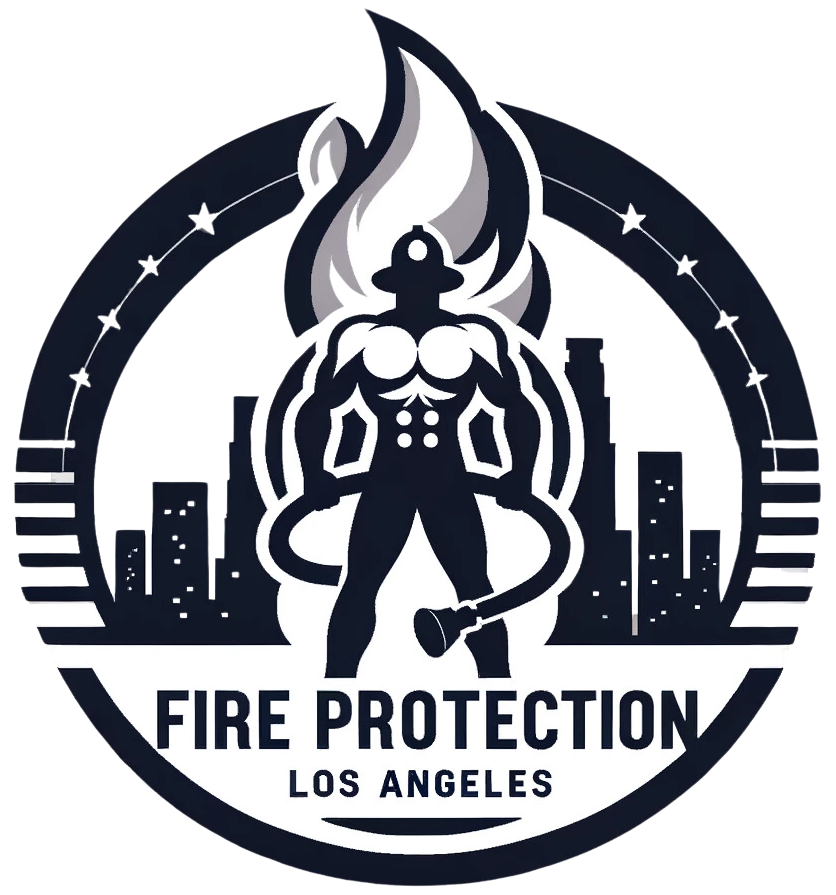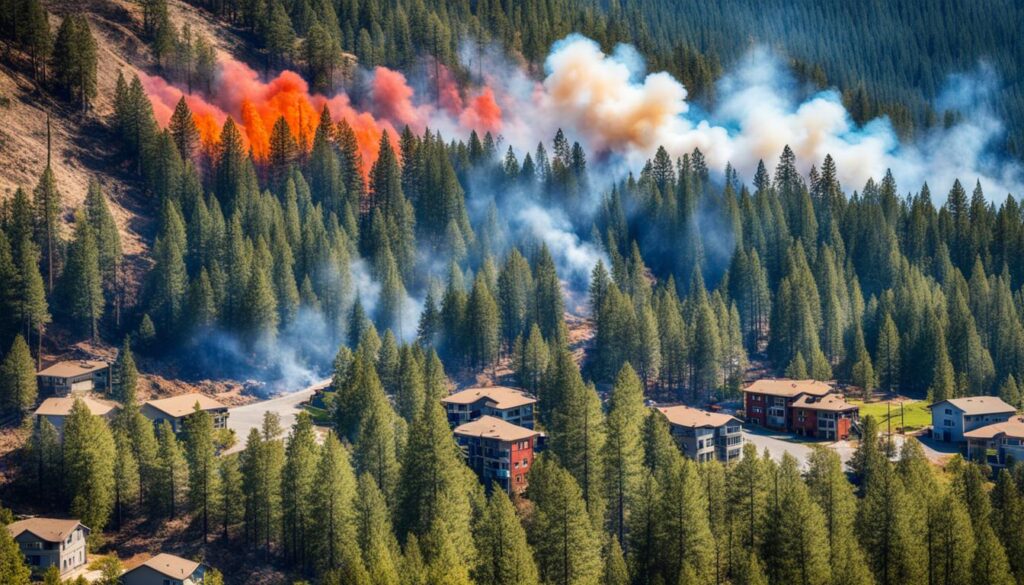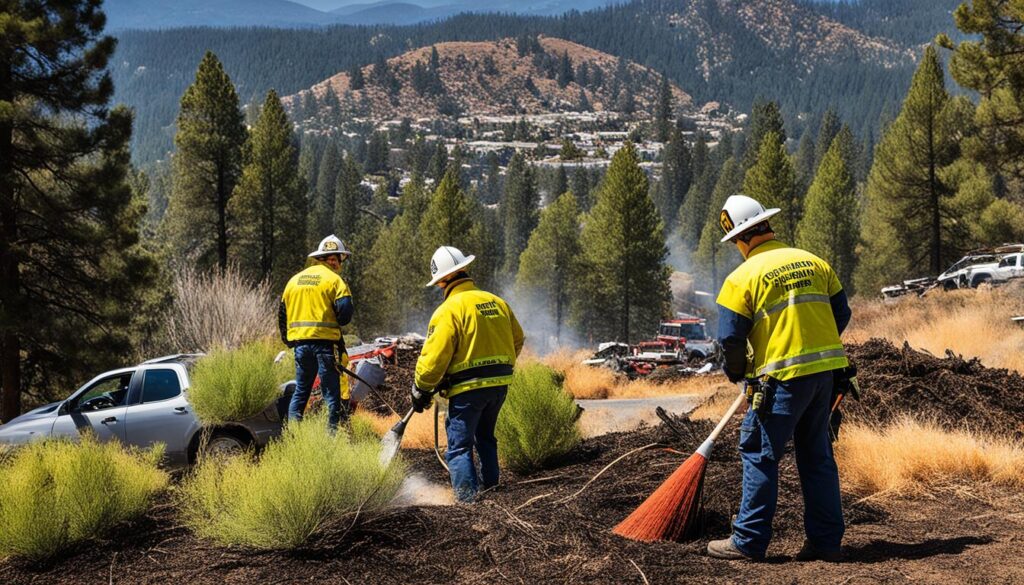Imagine the peace of nature near your home suddenly broken by a wildfire’s roar. This is the harsh reality for over 60,000 communities in the U.S. at risk of Wildland-Urban Interface (WUI) fires. The recent Lahaina blaze showed us the urgent need for strong fire protection in these areas.
The Wildland-Urban Interface is where nature and human homes meet, making it a hotspot for wildfires. It’s crucial to take steps to prevent these fires. We must focus on protecting the area around our homes to keep communities safe.
Creating defensible space is key to preventing wildfires. This means making sure homes are built and kept safe from fires. Using fire-resistant materials and managing the land around homes is essential for those living in the WUI.
The U.S. Fire Administration (USFA) has made it clear how important it is to reduce community risks. They use data to help plan and prevent fires. This approach is vital for keeping homes safe in the Wildland-Urban Interface.
Understanding the Wildland-Urban Interface and Its Risks
The Wildland-Urban Interface (WUI) is where buildings and nature meet. This area faces special challenges for fire safety and land use. As homes move closer to nature, learning to live with it is key. Now, over 46 million U.S. homes are in WUI zones, making them more at risk of wildland fires.
What is the Wildland-Urban Interface?
The WUI is where buildings and nature touch. It’s important for fire safety because of the risk of fires spreading from nature to homes.
The Growing Challenge of the WUI in American Landscapes
Building in wild areas has made old firefighting ways less effective. Homes in these areas are more at risk. Climate change makes wildfires worse, so we need strong wildfire protection plans.
Characteristics and Risks of Living in Wildland-Urban Interface Areas
Living in a WUI zone means facing risks like fast-spreading fires and tough firefighting access. Homes here often pay more for insurance and must follow special fire safety rules, like keeping areas around homes clear.
Strategies for Risk Assessment and Mitigation in WUI Zones
- Wildland fire management: Clearing brush and dead plants to lower fire risk.
- Structural modifications: Using materials that resist fire to make buildings safer.
- Community engagement: Creating wildfire plans that include evacuation paths and community actions.
Using new tech and better data helps us respond faster and safer to wildfires. By taking steps now, WUI communities can get better at fighting wildfires.
Homeowners can do a lot on their own, but safety comes from working together. Local governments, residents, and fire teams must work together to make WUI areas safer from wildfires.
Proactive Measures for WUI Fire Safety
In the Wildland-Urban Interface (WUI), it’s key to take steps to keep homes safe from wildfires. By using fire-resistant landscaping and following a community wildfire prevention plan, people can get ready for wildfires.
- Fire-Resistant Landscaping: Clearing flammable plants and using fire-resistant ones around homes can lower the risk of wildfires. Using Phos-Chek Home Defense on plants helps protect against fire. It’s a smart move for homeowners.
- Building Material Choices: Switching to fire-resistant materials for roofs, decks, and walls is important. Using Andek FireGard paint or DekGard for decks can help protect against wildland fires.
- Community Wildfire Prevention Plan: Working together to make a Community Wildfire Protection Plan (CWPP) helps communities know what to do to lower risks. It brings together efforts to fight wildfires.
- WUI Firefighting Training: Training local fire departments and volunteers in WUI firefighting is a smart move. It prepares them to tackle wildfires well.
Getting ready for wildfires takes a lot of work and needs everyone to get involved. By using these steps, WUI communities can fight the risk and effects of wildfires better.
Conclusion
California and the U.S. show us the urgent need for wildfire safety. Urban growth and lifestyle choices make the wildland-urban interface bigger. We must focus on firewise practices at home and in our communities.
Interface fires harm lives, property, and the economy. We must create defensible space and use fire-resistant materials in building. This is crucial.
Protecting the WUI is complex. It’s not just about choosing the right building materials. It also means educating homeowners, preparing communities, and following strict safety rules. About 38% of new homes in the West are near these dangerous areas. So, we must be ready and take action.
Preventing fires costs less than fighting them. Taking steps now can prevent future disasters and save money.
Human actions cause 85% of wildfires. But we can reduce these risks with smart actions. Building homes that can stand up to wildfires is key. Making changes to homes and landscapes helps protect us in WUI areas.
Wildfires are a big threat to many communities in America. Using good fire safety practices and strict building codes can help. These steps are important for our safety in a changing world.










